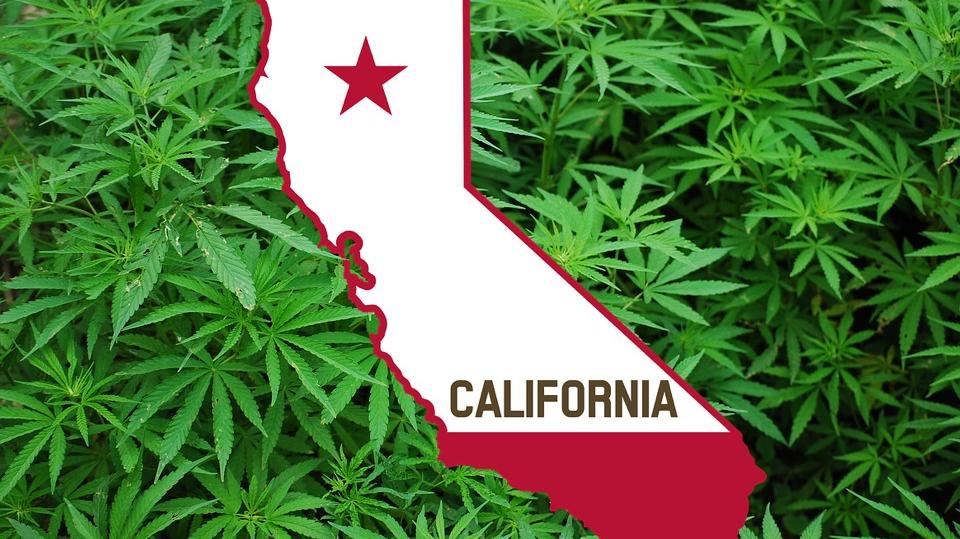California brings in New Year by becoming largest state to legalise recreational marijuana


The arrival of the new year in California has brought with it broad legalisation of marijuana, a much-anticipated change that comes two decades after the state was the first to allow cannabis to be put to medical use.
The nation’s most populous state joins a growing list of other states, and the nation’s capital, where so-called recreational marijuana is permitted even though the federal government continues to classify pot as a controlled substance, like heroin and LSD.
Pot is now legal in California for adults 21 and older, and individuals can grow up to six plants and possess as much as an ounce of the drug.
Here’s where you can legally smoke weed in 2018
But finding a retail outlet to buy non-medical pot in California won’t be easy, at least initially. Only about 90 businesses received state licenses to open on New Year’s Day. They are concentrated in San Diego, Santa Cruz, the San Francisco Bay Area and the Palm Springs area.
Los Angeles and San Francisco are among the many cities where recreational pot will not be available right away because local regulations were not approved in time to start issuing city licenses needed to get state permits. Meanwhile, Fresno, Bakersfield and Riverside are among the communities that have adopted laws forbidding recreational marijuana sales.
Berkeley Mayor Jesse Arreguin was on hand for a ribbon-cutting ceremony as his city began selling marijuana. The mayor was joined by state Sen. Nancy Skinner as pot sales began early on Monday at Berkeley Patients Group, one of the oldest dispensaries in the nation. A big crowd also gathered at Harborside dispensary in nearby Oakland, where customers hoped to be among the first to buy legal pot in the state.
Customers began lining up before dawn to be among the first to purchase legal marijuana in state, and before that, just after midnight, some Californians were raising blunts instead of champagne glasses.
Johnny Hernandez, a tattoo artist from Modesto, celebrated New Year’s Eve by smoking “Happy New Year blunts” with his cousins.
“This is something we’ve all been waiting for,” he said. “It is something that can help so many people and there’s no reason why we should not be sharing that.”
Mr Hernandez said he hoped the legalisation of recreational marijuana would help alleviate the remaining stigma some still believe surrounds marijuana use. “People might actually realise weed isn’t bad. It helps a lot of people,” he said.
For those who worked for this day, the shift also offered joyful relief. “We’re thrilled,” said Khalil Moutawakkil, founder of KindPeoples, which grows and sells weed in Santa Cruz. “We can talk about the good, the bad and the ugly of the specific regulations, but at the end of the day it’s a giant step forward, and we’ll have to work out the kinks as we go.”
The state banned “loco-weed” in 1913, according to a history by the National Organization for the Reform of Marijuana Laws, the pot advocacy group known as NORML. The first attempt to undo that by voter initiative in 1972 failed, but three years later felony possession of less than an ounce was downgraded to a misdemeanour.
In 1996, over the objections of law enforcement, President Bill Clinton’s drug czar and three former presidents, California voters approved marijuana for medicinal purposes. Twenty years later, voters approved legal recreational use and gave the state a year to write regulations for a legal market that would open in 2018.
Even with other states as models, the next year is expected to be a bumpy one in California as more shops open and more stringent regulations take effect on the strains known as Sweet Skunk, Trainwreck and Russian Assassin.
The California Police Chiefs Association, which opposed the 2016 ballot measure, remains concerned about stoned drivers, the risk to young people and the cost of policing the new rules in addition to an existing black market.
“There’s going to be a public-health cost and a public-safety cost enforcing these new laws and regulations,” said Jonathan Feldman, a legislative advocate for the chiefs. “It remains to be seen if this can balance itself out.”
At first, pot shops will be able to sell marijuana harvested without full regulatory controls. But eventually, the state will require extensive testing for potency, pesticides and other contaminants. A programme to track all pot from seed to sale will be phased in, along with other protections such as childproof containers.
Jamie Garzot, founder of the 530 Cannabis shop in Northern California’s Shasta Lake, said she’s concerned that when the current crop dries up, there will be a shortage of marijuana that meets state regulations. Her outlet happens to be close to some of California’s most productive marijuana-growing areas, but most of the surrounding counties will not allow cultivation that could supply her.
“Playing in the gray market is not an option,” Ms Garzot said. “California produces more cannabis than any state in the nation, but going forward, if it’s not from a state-licensed source, I can’t put it on my shelf. If I choose to do so, I run the risk of losing my license.”
In 2016, the state produced an estimated 13.5 million pounds of pot, and 80 per cent was illegally shipped out of state, according to a report prepared for the state by ERA Economics, an environmental and agricultural consulting firm. Of the remaining 20 per cent, only a quarter was sold legally for medicinal purposes.
That robust black market is expected to continue to thrive, particularly as taxes and fees raise the cost of retail pot by as much as 70 per cent.








